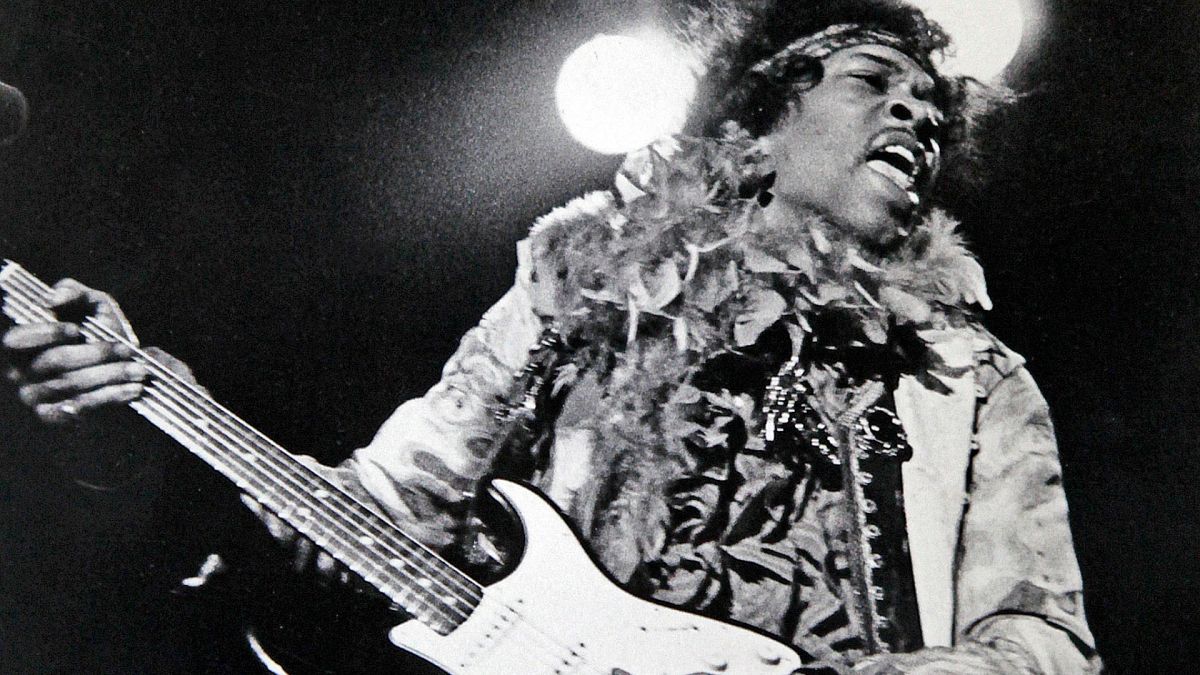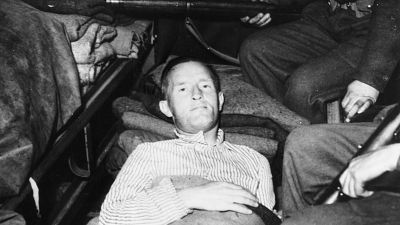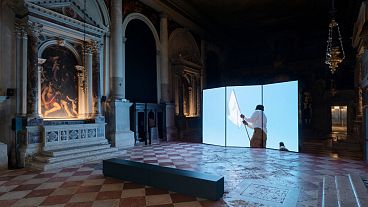18 September 1970: Jimi Hendrix dies
On this day in 1970, one of the biggest names is added to the infamous “27 Club”. The club is an urban legend for the coincidental demise of many a rockstar at the young age of 27. Last week we celebrate the life of Amy Winehouse who was also a member. Before Winehouse came Kurt Cobain, Jim Morrison, Janis Joplin, and of course… Jimi Hendrix.
Hendrix was born in Seattle in 1942. As a young boy, he was obsessed with the burgeoning rock n’ roll genre, particularly liking the guitar licks of Muddy Waters and Robert Johnson.
He hounded his father for a guitar, but was refused. Eventually buying his own, Hendrix formed a band and played a less-than-successful gig. In 1959, the 16-year-old Hendrix was given two sets at the De Hirsch Synagogue in Seattle. Hendrix only managed to play in the first one. His wild playing and “showing off” was too much for his bandmates, and the nascent guitar virtuoso was kicked out.
He wasn’t put off and went on to form The Jimi Hendrix Experience after a chance meeting with The Rolling Stones’ Keith Richards paving the way for a move to London. In London, Hendrix released three albums, ‘Are You Experienced’, ‘Axis: Bold as Love’ and ‘Electric Ladyland’. In the process, his playing – live and on-record – would change the course of guitar music forever.
By 1969, Hendrix was the world’s highest-paid rock musician. At his apotheosis, he headlined the 1969 Woodstock Festival. Innovative fingerwork on his iconic left-handed guitars had turned him into an international superstar.
With money though, came a lifestyle of unsustainable alcohol and drug use. On the morning of 18 September 1970, Hendrix died of asphyxia after choking on his own vomit from barbiturates. It was an ignominious end to a man whose skill on the guitar changed the face of rock music. Anyone with even a passing knowledge of the instrument lives in the shadow of Hendrix. Here are some of his best tunes:
Voodoo Child (Slight Return)
This is the song which most typifies the cacophony of sound Hendrix could wrench out of those six strings. There’s the punchy walls of chords that push any listener into line, only for them to be rattled into a frenzy by the wailing solos patched across them.
The sheer sonic range and chaos of sounds that Hendrix achieves – seemingly all at once – on ‘Voodoo Child’ is as good an intro as any into what made the virtuoso so unmistakable. Pay attention and you can hear Hendrix singing and the rest of his band playing their instruments too… just about.
Purple Haze
There isn’t a better opening riff to a song in existence. It’s kind of you to try and list them in your head right now, but you’re wrong. Perhaps the greatest genius of Hendrix’s guitar work is that while the songs are almost always in service of the instrument, they rarely feel indulgent.
While other guitarists will wax on Santana-style into the sunset, Hendrix’s opening riff here gets the point and propels the melody along. He then retreats into gloriously overdriven chords for the verses, before a set of solos that work alongside the propulsive momentum of the song. It’s a cohesive whole the entire way.
Little Wing
A far more chilled out song than the last two. This is nonetheless a showstopper from Hendrix as he demonstrates his uncanny ability to pair complex melodic leads with his sultry vocal tones.
Over a constantly shifting guitar lick, Hendrix almost croons. This is one of his most relaxing vocals and yet the intricacy of the guitar never obscures it. Finally, as the song reaches its climax, Hendrix lets rip for one of his sweetest passages of six-stringed bliss.
The Wind Cries Mary
Hendrix would almost never do anything as tastelessly dull as an acoustic song. Still, like ‘Little Wing’, there are wonderful moments of charming 60s prog-infused riffing. ‘The Wind Cries Mary’ is typical of these songs.
The entire thing feels like it comes out of a smoky jazz cafe as Hendrix pours out his poetic ode to then-girlfriend Kathy Etchingham. This is Hendrix at his most purely blues-inflected and the clean sound of the guitar gives insight into the maestro’s versatile playing.
All Along the Watchtower
Hendrix’s cover of Dylan’s 1967 song is an example – much like Amy Winehouse and Mark Ronson’s ‘Valerie’ – of a cover completely eclipsing the original. Dylan’s religious allusions and Western-epic stylings in the lyrics are perfectly paired with Hendrix’s ability to create multi-coloured landscape paintings with sound.
As Hendrix’s opening lick screeches over a thrusting set of chords, the visuals of the joker and the thief from the song come into clear relief. One of the greatest uses for this cinematic cover is over images of a crumbling Britain in the peerlessly brilliant Withnail and I.



